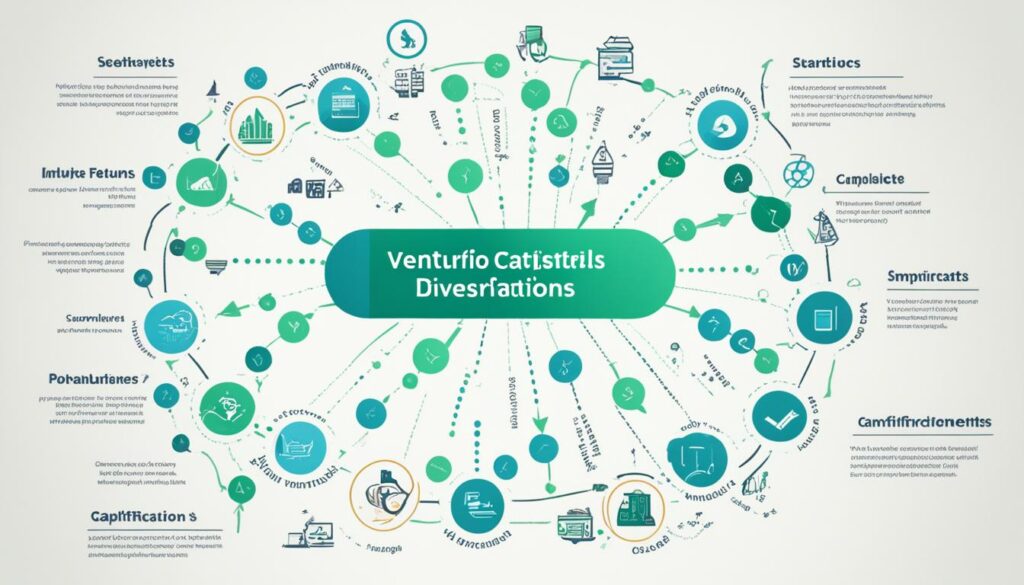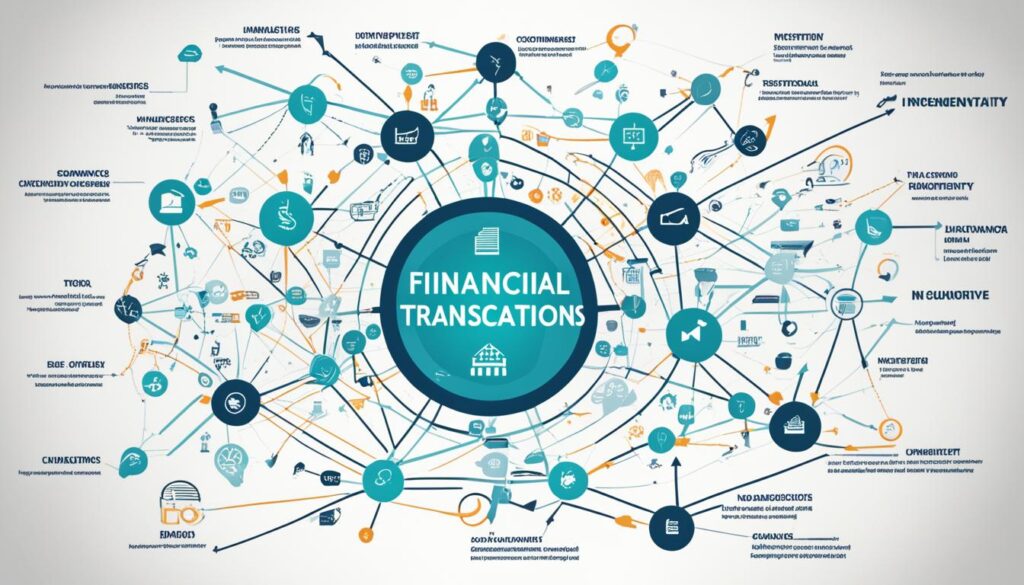When it comes to the world of venture capitalism, the question on many people’s minds is: what do venture capitalists (VCs) actually get in return for their investments? It’s a fair question, especially given the high-risk, high-reward nature of the venture capital industry.
Venture capitalists provide capital to high-growth startup companies in exchange for an equity stake in the business. This equity ownership gives VCs the potential for significant capital gains if the startup is successful and can be sold or goes public. VCs typically aim for a return of at least 10 times their initial investment over 5-7 years.
However, the returns in venture capital often follow a power-law distribution, where a small number of “home run” investments generate the majority of a fund’s returns, while many others break even or result in losses. To manage this risk, VCs construct a diversified portfolio of investments across different sectors, stages, and geographies.
Key Takeaways
- Venture capitalists provide capital to high-growth startups in exchange for an equity stake.
- VCs aim for a return of at least 10 times their initial investment over 5-7 years.
- VC returns often follow a power-law distribution, with a few “home run” investments driving the majority of returns.
- To manage risk, VCs construct a diversified portfolio across sectors, stages, and geographies.
- The potential for significant capital gains is a key driver for venture capitalists.
Understanding the Role of Venture Capitalists
Venture capitalists (VCs) are private equity investors who provide venture capital financing to companies with high growth potential in exchange for an equity ownership stake. These VCs typically target high-growth startups and small businesses that wish to expand but lack access to public equity markets. By investing in these high-risk, high-reward companies, VCs aim to generate significant returns if the investments are successful.
Providing Capital to High-Growth Companies
VCs play a crucial role in funding and supporting the growth of innovative startups and small businesses. These companies often require substantial capital to develop their products, build their teams, and validate their business models. VCs step in to provide the necessary financing, enabling these high-potential ventures to scale and reach their full potential.
Equity Stake and Potential for High Returns
In return for their capital, VCs receive an ownership position in the company, giving them a stake in the potential future success and profits of the business. This risk-reward profile drives the venture capital industry, as VCs seek to generate outsized returns to compensate for the inherent risks associated with investing in unproven companies.

The Venture Capital Process
The venture capital investment process begins with VCs sourcing and evaluating potential VC investment process opportunities. VCs look for companies with strong management teams, large market potential, and a unique product or service. Once an opportunity is identified, VCs conduct extensive due diligence, analyzing the company’s financials, market dynamics, and competitive landscape.
Sourcing and Evaluating Investment Opportunities
VCs actively seek out promising deal sourcing opportunities, leveraging their extensive networks and industry expertise to identify high-growth startups with significant potential. They carefully evaluate each prospect, assessing factors such as the management team’s experience, the size and growth potential of the target market, and the uniqueness of the company’s product or service offering.
Conducting Due Diligence and Negotiating Terms
If an investment opportunity is deemed viable, VCs then proceed to conduct a thorough due diligence process. This comprehensive review includes a deep dive into the company’s financial records, market analysis, competitive positioning, and operational capabilities. Once the due diligence is complete, VCs enter into term negotiation with the startup’s founders, agreeing on the amount of capital, equity stake, and other rights and obligations.

Venture Capital Fund Structure
The venture capital fund structure is an essential component of the venture capital industry. Venture capital firms are typically organized as limited partnerships (LPs), where investors, such as institutional investors and high-net-worth individuals, provide the majority of the capital. The venture capital firm acts as the general partner (GP), responsible for making investment decisions and managing the fund.
Limited Partnerships and General Partners
In this structure, the limited partners (LPs) are the investors who provide the capital, while the general partner (GP) is the venture capital firm that manages the fund. The GP is responsible for sourcing, evaluating, and selecting investments, as well as overseeing the portfolio companies. The LPs, in turn, rely on the expertise and experience of the GP to generate returns on their investments.
Management Fees and Carried Interest
In exchange for their services, the general partners (GPs) receive management fees, typically around 2% of the fund’s assets, as well as a share of the profits, known as carried interest. This carried interest is usually set at around 20% of the fund’s returns, providing an incentive for the GPs to generate high returns for the LPs.
| Venture Capital Fund Structure | Description |
|---|---|
| Limited Partnerships (LPs) | Investors who provide the majority of the capital for the venture capital fund |
| General Partners (GPs) | The venture capital firm responsible for managing the fund and making investment decisions |
| Management Fees | Fees paid to the GPs, typically around 2% of the fund’s assets |
| Carried Interest | The share of profits (usually 20%) that the GPs receive from the fund’s successful investments |

Expected Returns and Risk Profile
Venture capitalists typically aim for a return of at least 10 times their initial investment over 5-7 years, seeking to compensate for the high level of risk associated with investing in early-stage, unproven companies. This VC expected returns target is driven by the inherent risk-reward profile of the venture capital industry, where the potential for outsized gains on successful investments must offset the losses incurred from less successful ones.
Targeting High Returns to Compensate for Risk
The venture capital industry is characterized by a power-law distribution of returns, where a small number of “home run” investments generate the majority of a fund’s returns, while many others break even or result in losses. This uneven distribution of outcomes means that VCs must target high returns on their successful investments to make up for the inevitable losses that occur across their diversified portfolio.
Power-Law Distribution and Portfolio Diversification
To manage the risk posed by the power-law distribution of VC returns, investors construct portfolio diversification across different sectors, stages, and geographies. By spreading their capital across a range of investments, VCs expect that a few successful “home run” deals will offset the losses from less successful ones, ultimately generating the targeted high returns that their investors demand.

What do venture capitalists get in return?
In exchange for providing capital to high-growth startups, venture capitalists receive an equity stake in the companies they invest in. This equity ownership gives VCs the potential to earn significant capital gains if the startup is successful and can be sold or goes public. While not all VC investments are successful, the potential for outsized returns on a few “home run” investments is what drives the venture capital industry. VCs aim to generate these high returns to compensate for the inherent risks and losses associated with investing in unproven companies.
Equity Ownership and Capital Gains
By investing in promising startups, venture capitalists acquire an equity stake in the company. This ownership position entitles them to a share of the company’s future profits and growth. If the startup achieves significant success and can be sold or goes public, VCs have the opportunity to realize substantial capital gains on their investment.
Potential for Outsized Returns on Successful Investments
The venture capital model is predicated on the potential for a small number of highly successful investments to generate outsized returns that offset the losses from less successful ventures. VCs construct diversified portfolios to manage this risk, expecting that a few “home runs” will more than compensate for the inevitable failures and underperformers in their investment portfolio.

Advantages of Venture Capital Financing
Venture capital financing offers several key advantages to startups and growing companies. First, VCs provide long-term equity financing that can be used to fuel growth, without the constraints of debt financing. This equity financing allows companies to focus on scaling their business without the burden of regular loan payments.
Long-Term Equity Financing for Growth
By infusing startups with equity capital, venture capitalists enable these high-growth companies to invest in product development, expand their operations, and capture larger market shares. This access to flexible, long-term financing is a key advantage that venture capital provides.
Strategic Guidance and Industry Expertise
In addition to capital, venture capitalists offer strategic guidance and industry expertise to their portfolio companies. Drawing on their experience working with other startups, VCs can provide valuable insights and advice to help companies navigate challenges, identify new opportunities, and optimize their strategies for success.
Access to Networks and Resources
Venture capitalists also serve as conduits to expansive networks and resources that can benefit their portfolio companies. These connections may include potential customers, partners, talent, and other industry experts who can help startups accelerate their growth and development.
These benefits, in addition to the capital provided, make venture capital an attractive financing option for high-growth companies seeking to scale and achieve market success.
Challenges and Drawbacks
While the venture capital financing model offers significant advantages for startups seeking to fuel their growth, it also comes with its own set of challenges and potential drawbacks. The highly competitive nature of the venture capital industry means that securing funding can be a difficult and arduous process, and even successful startups may face immense pressure to grow quickly and meet the aggressive targets set by their VC investors.
Additionally, venture capitalists typically take a substantial equity stake in the companies they invest in, which can significantly dilute the ownership and control of the founding team. This can be a challenging trade-off for entrepreneurs who may have to relinquish a significant portion of their company in exchange for the capital and resources provided by VCs.
Furthermore, startups must be prepared to navigate the extensive due diligence and negotiation process required by venture capitalists before receiving funding. This can be a time-consuming and resource-intensive endeavor, distracting the founding team from their core business operations and potentially delaying crucial milestones.
Despite these challenges of venture capital financing, many entrepreneurs and startups still view VC investment as a valuable tool for fueling their growth and accessing the strategic guidance, industry expertise, and networks that venture capitalists can provide. However, it is crucial for startups to carefully weigh the drawbacks of VC financing against the potential benefits before pursuing this path of funding.

Historical Perspective and Key Players
The modern venture capital industry has its roots in the mid-20th century, with the establishment of the first publicly funded VC firm, the American Research and Development Corporation (ARDC), in 1946. ARDC’s founder, Georges Doriot, is considered a pioneer of the history of venture capital, helping to establish many of the practices and structures still used today. Over the decades, the VC industry has grown significantly, with the emergence of influential firms and individuals, such as Jim Breyer (an early Facebook investor), Peter Fenton (an investor in X), and Peter Thiel (co-founder of PayPal).
Origins of Modern Venture Capital
The origins of VC can be traced back to the establishment of ARDC in 1946, which was the first publicly funded venture capital firm. ARDC’s founder, Georges Doriot, is widely recognized as a pioneer in the industry, helping to lay the groundwork for many of the practices and structures that are still used by venture capitalists today. Doriot’s vision and leadership played a crucial role in the early development and growth of the modern venture capital ecosystem.
Influential Venture Capitalists and Firms
Over the years, the venture capital industry has seen the emergence of numerous influential individuals and firms that have shaped its evolution. Some of the most prominent influential VCs and firms include Jim Breyer, an early investor in Facebook, Peter Fenton, an investor in X, and Peter Thiel, the co-founder of PayPal. These individuals and their respective firms have played significant roles in identifying, funding, and supporting some of the most successful tech startups and disruptive companies of the past few decades.
| Statistic | Value |
|---|---|
| Venture capitalists invest in industries that are more competitively forgiving than the market as a whole to earn superior returns. | – |
| A venture capital partner typically spends less than two hours per week on any given company in their portfolio. | – |
| In a typical portfolio, venture capitalists manage around 10 companies. | – |
| This data is from the November–December 1998 issue of Harvard Business Review. | – |
The venture capital industry has evolved significantly over the decades, with the emergence of influential individuals and firms that have played pivotal roles in shaping its development. From the pioneering efforts of Georges Doriot and the establishment of ARDC to the more recent successes of VCs like Jim Breyer, Peter Fenton, and Peter Thiel, the history of venture capital is marked by a rich tapestry of innovation, risk-taking, and transformative investments.

Venture Capital in Different Stages
Venture capitalists invest in companies at various stages of their lifecycle, from the earliest seed and startup phases to growth and later-stage financing. The risk and investment theses differ across these stages, with VCs adjusting their strategies and portfolio allocations accordingly.
Seed and Early-Stage Investing
In the seed and early stages, VCs provide capital to help companies develop their products, build their teams, and validate their business models. This is a crucial phase where startups are just beginning to take shape, and venture capital plays a pivotal role in nurturing their growth and potential.
Growth and Later-Stage Financing
As companies progress, VCs may provide growth-stage financing to help them expand into new markets, scale their operations, and prepare for potential exits, such as an initial public offering (IPO) or acquisition. These later-stage investments typically involve lower risk compared to the earlier phases, but they also provide VCs with the opportunity to capitalize on the company’s proven success and growth trajectory.
The venture capital in different stages, from seed and early-stage investing to growth and later-stage financing, allows VCs to cater to the diverse needs of startups and emerging companies at various points in their life cycle. By adapting their investment strategies and risk profiles, venture capitalists can optimize their portfolios and maximize the potential for high returns.

Conclusion
The venture capital industry plays a vital role in funding and supporting the growth of high-potential startup companies. By providing capital in exchange for an equity stake, venture capitalists (VCs) aim to generate significant capital gains if their investments are successful. This risk-reward profile drives the VC industry, as VCs construct diversified portfolios to offset the inherent risks of investing in unproven companies.
While securing VC funding can be challenging, the strategic guidance, industry expertise, and access to valuable networks and resources that VCs provide can be invaluable for startups seeking to scale and achieve market success. As the venture capital landscape continues to evolve, with some VCs being described as more conservative than the risk-takers of the past, the industry’s ability to support high-growth companies remains a crucial component of the entrepreneurial ecosystem.
Ultimately, the venture capital industry’s focus on earning consistently superior returns on inherently risky investments, coupled with their selective approach to portfolio management, highlights the unique role they play in funding and nurturing the next generation of innovative businesses.
